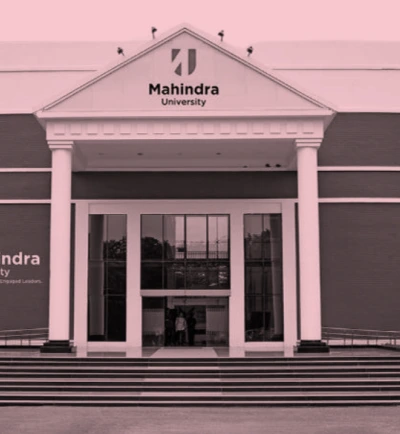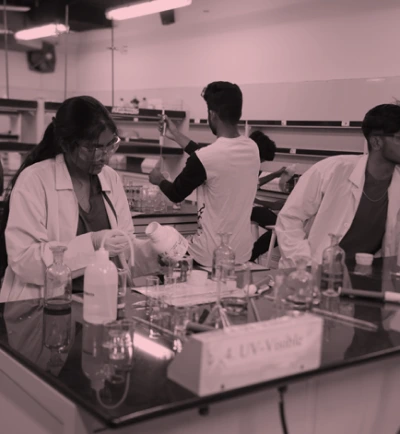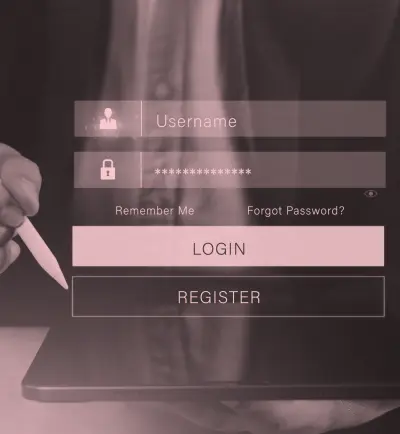MA in Journalism and Mass Communication
The School of Digital Media and Communication (SDMC) at Mahindra University offers an MA in Journalism and Mass Communication (MJMC) degree to equip its graduates to be righteous, responsible, competent, and globally acceptable. The school shall adopt the highest standards to cultivate and foster these qualities. The MJMC programme is designed as an intensive and rigorous project for the student.
The programme is thoughtfully designed to meet the demands of industries and businesses, while also addressing societal needs. The goal is to produce a well-rounded graduate who possess conceptual, ethical, practical, and behavioural competence and are aware of the rights, responsibilities, and privileges of an educated and communicative citizen. As the institution evolves with technological and sociological advancements, particular attention will be given to digital media.
STRANDS OF STUDY
The MJMC programme offers the student scope to explore a variety of specialized pursuits, which are functionally different, and require common competencies. and both common and different skill sets. The school's degree programmes share foundational courses, incorporating numerous practice-based modules. During this initial phase, students will be exposed to diverse learning methods and resources, such as lectures, lab sessions, independent and field work, library access, guest speakers, and self-directed learning. Students will soon grasp the complexities of practical application and learn to analyse existing practices while solidifying their understanding of core concepts in journalism, filmmaking, and communication management. This combination produces graduates who are technologically proficient and ethically grounded, conceptually sound, and practically skilled.
Subjects in the curriculum offer the following strands of study:
The academics of the MJMC student are completed by exposing them to industry and society practices. Additionally, practitioners help the student simulate situations that are common in the "real world". This exposure takes the following forms:
PROGRAMME GOALS
Hence, in this programme, the model of pedagogic and investigative objectives takes on the shape of five "programme goals." Although these goals are applicable across the undergraduate and postgraduate offerings, their contours and definitions will vary with the sophistication of the student's level of academic pursuit. These general goals are as follows:
PROGRAMME-SPECIFIC GOALS
In alignment with the programme goals, a targeted set of outcomes is sought from the MJMC programme. Thus, sliced both vertically and horizontally, the programme-specific goals emerge. For the MJMC programme, the following goals align with the guiding philosophy—to view learning as a methodology of desirable change.
PROCESS
The MJMC programme adopts flexibility within broad structures and systems. Thus, a student's journey is not only an academic one but a professional one, allowing them to experiment and bring out unique outcomes. To that end, the following is the process:
Of the four semesters of on-campus input, the first two semesters will cover a broad variety of subjects. The subsequent two semesters are both specialized and increasingly output-driven—that is, a student is expected to invest in making independent or group products that are tangible showcases of thoughts, ideas, competencies, skills, and project management.
Internships
One way to prepare the student is by filling practical gaps that occur between academic input and professional practice, and the school believes that the most effective way to cover those gaps is by embedding the student in the professional workspace. The student performs a professional role, usually to fulfil the criteria of a proposed and accepted project. The school will make all efforts to secure internships; however, the student is expected to participate and actively search and network to unlock it.
A social sector internship or initiative, a mandatory industry internship and an optional internship are included in the programme:
- One for-credit social sector internship or initiative for 4-6 weeks at the end of the first semester.
- One for-credit industry internship for 10-12 weeks at the end of the second semester. This internship is exploratory, reaffirming a preliminary strand a student chooses.
- One optional, not-for-credit industry internship during the final semester or following it. An internship in a specialised field or in place of a campus placement may be advantageous to the student.
The social sensitization internship is special and rather unique. In a nation where the economics and model of private higher education favour the affluent elite, the school believe that understanding society in all its diversity is essential for any professional or researcher, which is why it comes before most other field activities. This environment can assist, though, by providing the student with exposure to the "other side of society," an experience that privilege frequently excludes. The school hopes that a potential changemaker finds this encounter to be transformative. It is the hope that this experience turns out to be transformational for a potential changemaker. These exposures to "real-world experiences" are aimed to solidify the concepts-to-practice relationship. In the social sensitization immersion, the student learns to relate with communities, social organizations, government agencies, institutions, and industries.
The second internship in the industry in which the student has made a preliminary choice to specialize. A third optional internship may be in the student's desired industry, even if they have chosen one that is different from the second internship.
Ample feedback from the organization and the student is obtained. Assessment is computed based entirely on systematic feedback from the organization and the student's presentation to demonstrate the competencies and experiences during their internship.
Placement Assistance
One way in which the school enables the students to graduate to the next stage of their professional life is to prepare them as much as possible to enter the communication industry of their choice. A systematic and relationship-based process takes the student through this process of putting the best professional foot forward in a way that is not a superficial display, but by being ready in all dimensions. While not assuring placements, a Placement Committee is constituted to assist the student in final placements. Much of this is a two-way street, and the student must fulfil expected academic and other criteria.
Research Orientation
A student's orientation to research prepares them for careers that involve investigation, of course, such as a doctoral pursuit. However, research is often mistaken to be a theoretical activity leading only to academic exploration. To enable communicators of the future to make a tangible difference to the professions they enter, it is important for them to imbibe the principles of independent thought and in-depth, scientific, systematic inquiry and providing new directions and concepts. This is what we may call "research-thinking"—the ability of a person to traverse the journey from understanding to application, analysis, and evaluation. This is, of course, the essence of Bloom's Taxonomy. However, the school enables the students with the space for application and the tools and techniques of analysis and evaluation, and that is the endeavour.
ASSESSMENT
Assessment provides a gauge of each student's evolving comprehension. Student progress is carefully monitored through ongoing assessment, which helps gauge their growing understanding. While these assessments contribute to the final grade, they are designed to provide valuable feedback on learning. The evaluations are based on clear, measurable, and targeted outcomes. Consistent class attendance is expected, as this continuous engagement is crucial for students to synthesize different concepts. Exams, while encouraged, play a smaller role in the overall grade, as the focus is on continuous learning and development.
Individual instructors, in consultation with the Dean, determine both the syllabus and the grading combination. They are encouraged to make each assessment count toward the final grade to coax the student to take these dipstick measurements seriously.
A typical grading combination for a course may look like this:
Generally, assessment is continuous in the courses. Sometimes, an instructor external to the school may reasonably decide to assess using another pattern. Class participation is a necessary element in the grading pattern. While best efforts are made to evaluate the student on individual initiation of or participation in class discussions, attendance itself can be a good measure of class participation. In that case, the individual instructor takes the responsibility of driving individual student participation.
GRADUATE OUTCOMES
The school prepare MJMC graduates in three ways—for industry practice, for research careers, and as entrepreneurs. However, it should be borne in mind that many communicative careers involve certain common competencies. For example, for a journalist or a filmmaker, each story is managed as a project, progressing from ideation to fruition. A communication manager's career, too, is full of projects—an advertising or public relations campaign, a digital marketing project. Even seemingly "regular" work, such as preparing on-screen content for entertainment shows, social media content for news, or ticker content for cricket matches, are nothing short of projects in themselves. They involve multiple teams, specified processes, and the ability to coordinate across those processes. Thus, a "producer's hat" is the most common competency for media communicators. Moreover, a thorough understanding of how something works is an expected prerequisite for communicators.
The following agencies and departments will find the graduates valuable:
| Digital and multimedia news desks | Digital content agencies |
| AI desks in news organizations | Digital marketing agencies |
| Investigative and data desks at news organizations | UI/UX writing agencies |
| Business, sports, culture, crime, community, health, environment desks at news organizations | Social listening and conversational design firms |
| Social media desks at news platforms | AR/VR/XR storytelling and content agencies |
| Show producers in news channels Independent and "alternative" news channels | Corporate communication divisions |
| Entertainment production houses and over-the-top (OTT) streaming platforms | Brand communication divisions |
| Documentary film producers | Corporate filmmakers |
| Commercial filmmakers | Creative, production, media, and account divisions at advertising agencies |
| Special visual effects (VFX) and animation production houses | Public relations consultancies |
| Game design firms | Corporate CSR divisions |
| Podcast producers | Publishing houses |
| Web and SEO content developers | Non-governmental organizations (NGOs) |
| Research foundations | |
| Ph.D. programmes in journalism studies, media studies, communication studies, and related areas |









